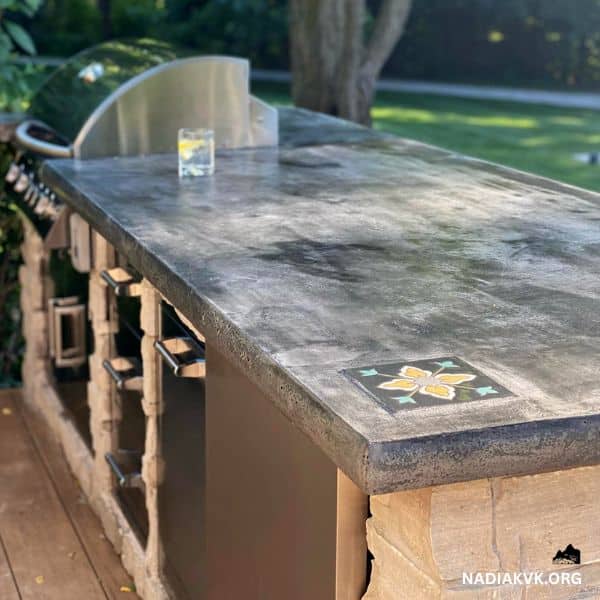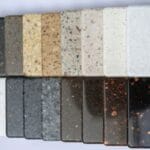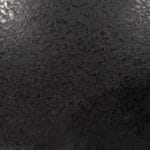The design community frequently chooses Concrete Countertops surfaces for kitchens and bathrooms. Because these particular cement countertops preserve their contemporary edges and stunning texture while providing a distinctive and rustic appearance.
Counters can be installed in a variety of ways, but the majority of people utilize a concrete mix and an aggregate like pea gravel. These counters are sturdy, long-lasting, and need little maintenance. The installation can be done on a DIY basis or by a professional, depends upon you.
You might not know much about the material because of these types of worktops are becoming more popular in kitchens and bathrooms, and other areas. And it can be made in any shape or size, with colors and design ideas that match your style.
DiY Concrete Countertops

Pros and Cons
Pros
- One of the most popular options is to use this countertops. Because of durability and cost, and eco-friendly benefits, there are many things that make this material a top contender for those who want a new kitchen look.
- Quickly rising in popularity for kitchens and bathrooms.
- Concrete has a rustic, that can look great in both modern and traditional spaces.
Cons
- Some disadvantages of using this concrete countertops. Biggest issue is that it doesn’t go well with other materials such as metal or wood. You will have to live with the look of these two materials clashing with the color of your countertop if you choose this option.
- This can make your kitchen feel cramped and cluttered, as well as take away from the natural beauty of these materials. Concrete is also porous and not easy to clean. It means that dirt can easily accumulate on your counters creating an unattractive appearance and attracting bacteria over time.
Read More: Granite Countertop Colors
Cost And Maintenance
This type of countertops have been shown to be a modern and sleek alternative to the staid granite or marble countertops that have dominated kitchens for decades.
The cost and maintenance of Concrete Countertops, while initially more expensive than traditional materials, are quite manageable in the long term.
The average cost per square foot was roughly. The expense of a more creative design can reach $5 per square foot or more. Cost of maintaining countertops is minimal and doesn’t require much upkeep.
How to Make Concrete Countertops
Are you looking to update your kitchen because you’re sick of the outdated, dull countertops you currently have? A cement countertop is a solution. It may be tailored to meet any design aesthetic in addition to being strong and long-lasting. We’ll go over the procedures for making this countertop in this article, so you may update your kitchen on your own.
Creating the form is the first stage in manufacturing. To do this, you first measure the size of your Concrete Countertop and construct a mold from melamine boards. After the mold has been constructed, the concrete needs to be mixed and poured into the mold. Be sure to use high-quality concrete mixtures that are specifically designed for countertops.
It’s crucial to cure and seal the concrete properly after pouring it into the mold. Curing and sealing strengthen the concrete and, correspondingly, guard against water damage and discoloration. Here are the details for making this countertops:
Read More: Does Granite Stain and Fade Over Time
It is a great alternative to traditional stone countertops. Not only when you want to save time and money, but you also want more eco-friendly kitchen. You can make your new countertops in just a few steps:
- Making the mold.
- Build your frame.
- Layout the cement mix and aggregate.
- Spread glue on the edges of your frame.
- Place your form on top of the glued edge.
- Pour concrete into the form until it is full.
- Remove the mold after at least 24 hours, then allow it to dry for 3-4 days before topping with quartzite or marble.
Read More: Silestone Et Calacatta Gold
Making The Mold
Making the mold for a concrete is the first step to creating a unique and beautiful kitchen.
It’s critical to take measurements before starting construction because the mold must flow naturally into your kitchen area to be aesthetically pleasing.
The mold is created by putting up a temporary wall on one side of the space, cutting a hole in it for the sink, filling the inside walls with plywood and masking tape, and then coating everything with fiberglass and resin.
Before deciding the material, you’ll use to build the mold, you might want to have a look at some additional important elements of the mold.
For example, selecting stainless steel as your mold material ensures that no harmful substances will get into your food when you prepare food on your new countertops.
Read More: Epoxy Countertops
Building Frame
The first step is to create a plywood template for your countertop. Place the plywood on top of the concrete slab and mark its perimeter with chalk.
After measuring the plywood, deduct 1/4″ from its thickness.
Mark the other three corners of your new planter box using these measurements as well. Trim any excess material to create square corners.
Next use a miter saw to finish up.
Make certain that the frame fits the mold perfectly and is tight enough to support the concrete and other materials.
The dimensions of the frame should be decided by the volume of the material mixture and the mold.
Lay out The Cement Mix And Aggregate
The cement mixture and aggregate must often be spread out before making this counters. However, some people usually overlook or are unaware of the fact that they must adopt this strategy gradually. Because you will receive comprehensive instructions on how to accomplish it.
You must find a level surface. Concrete slabs or plywood can be used for this.
Next calculate how much cement you’ll require for the project. The amount should be determined based on the area that needs to be covered with cement mix.
Third, sift the aggregate through a fine screen to ensure that there is no dirt mixed.
Laying down cement mix and aggregate to make concrete countertops. Shape the wet material into a three-inch-thick slab.
Read More: Luna Pearl Granite
Spread Glue On The Edges Of Your Frame
As challenging as it might appear, making a countertop that resembles stone or marble is not that difficult. The glue is a crucial component in creating the appearance of stone or marble.
Your countertops will seem elegant and intricate thanks to the adhesive. In order to create a stunning countertop, an adhesive can be applied in a number of ways. We’ve covered three of the most popular techniques here: adding glue to the frame’s corners, its top and bottom, and its four sides.
Read More: Blue Bahia Granite
Place Your Form On The Top Of Glued Edge
Making a concrete form is the following stage. Make the form using a substance that forms cement. It ought to be put on top of the edge that was bonded because this is a method for precisely making countertops.
Pour Concrete Into The Form Until It Is Full
This countertops are a durable and cost-effective substitute to more expensive materials like marble or granite. The pour in place method is the one that is used most often to create this type of countertops.
Because this method requires that the concrete be measured, mixed, and poured into a wooden frame. You take your countertop’s wood frame off after a week of drying, then sand the top.
Take a large bucket, fill it with mold, and start to fill it with concrete, adding the right amount of the compound. Use a trowel to now thoroughly combine the concrete and mold.
When you pour concrete into a frame, air bubbles from tiny pockets of air in your mix might generate some ugly blemishes on the surface. To prevent these flaws on the final surface, the corners of this frame should be bonded.
Removing The Mold
Mold removal products come in both spray and wipe forms. These products will get rid of the mold without harming your countertop.
When making concrete countertops, the mold used to shape them must be removed carefully to avoid any damage. This process involves scraping off any extra sand, cement, and clay from the mold surface using a long handled scraper with a wide blade.
After scraping, only the mortar and release agents will remain on the surface. Next, a sealer is applied around the mold and in all the ridges to protect it from moisture and prevent leaks.
Be sure to wipe off any cleaning products before they dry on your countertops. Once everything is done, you should seal your counter to stop water from soaking into the surface in the future.
Read More: Luna Pearl Granite
Applying The Countertops
After removing the mold, use some tools to give the slab a finishing touch, then let it dry completely.
Once the countertop is fully dry it’s ready to be installed in the kitchen. During installation, carefully hold the countertop to avoid any damage.
Now enjoy the beauty of your newly installed countertop.





